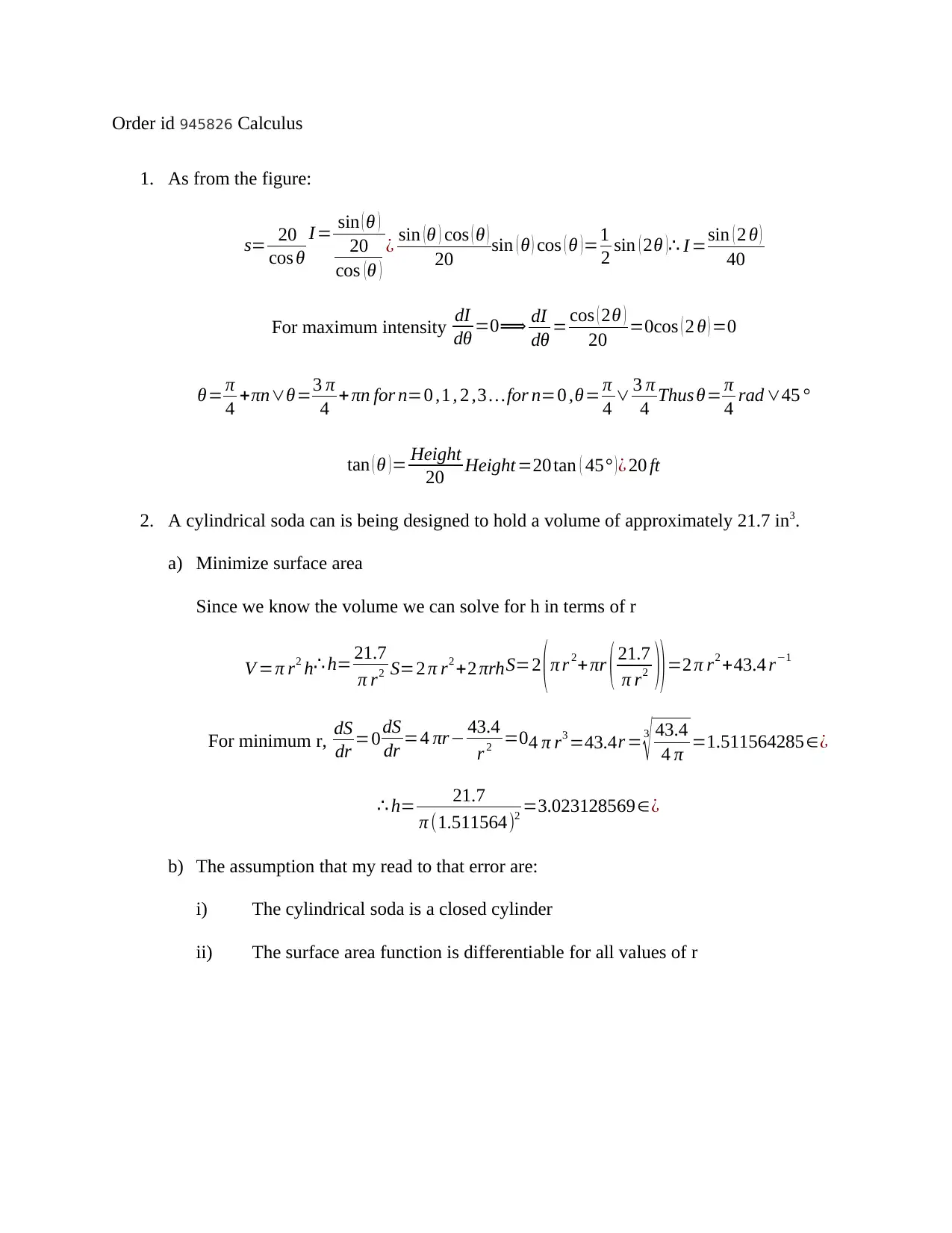Calculus Quiz: Optimization and Cylindrical Volume Problems
VerifiedAdded on 2023/01/13
|1
|265
|41
Quiz and Exam
AI Summary
This Calculus quiz, designed for MTH 150, presents two problems. The first problem involves determining the optimal height of a lamppost to maximize the intensity of illumination on a circular pathway. The solution uses trigonometric functions and the concept of maximizing a function to find the optimal height. The second problem focuses on minimizing the surface area of a cylindrical soda can with a fixed volume. The solution uses calculus, specifically derivatives, to find the radius and height that minimize the surface area. The quiz emphasizes the application of calculus principles to real-world optimization problems, with detailed steps and explanations.



![[object Object]](/_next/static/media/star-bottom.7253800d.svg)